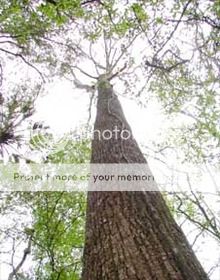The Tulip Polar (Liriodendron tulipifera) is the State Tree of Indiana and is a member of the magnolia family, not a poplar. It has many names: Tulip Polar, Yellow Poplar, Tulip Magnolia, Tulip Tree, Whitewood. 
Tulip Poplar is a rapid-growing tree, growing to heights of 80-120 feet tall and a trunk diameter of 2-5 feet. Because of its rapid growth, this species is commonly planted for reforestation purposes and as an ornamental tree in landscaping. Tulip Polars tend to be resistant to insects and disease, but the wood is weak and tends to be prone to wind and ice damage in exposed situations.

It grows throughout the eastern and southern portions of the United States. (Personal note: we had a Tulip Poplar growing in front of my elementary school in New Glarus, WI when I was a kid, so it can grow outside its natural range.)

The leaves are deciduous, tulip-shaped, alternate, and simple with smooth edges and surfaces.

The tree produces tulip-shaped, greenish-yellow flowers from April to June.

The bark on younger trees is quite smooth, light gray in color, with very shallow furrows running up and down the trunk. As the tree grows older the bark becomes very thick with deep interlacing furrows and narrow rounded ridges. Besides its reforestation and landscaping uses, the wood is used for furniture stock, veneer, and pulpwood. The wood is moderately light, soft, brittle, moderately weak, and very easily worked.
You are searching for a bison tube about head-high. Bring your own pencil. Please avoid searching for this cache when church gatherings are in progress. Thanks go to Pastor Anthony Stone of Centenary UMC for granting permission for the placement of this cache.